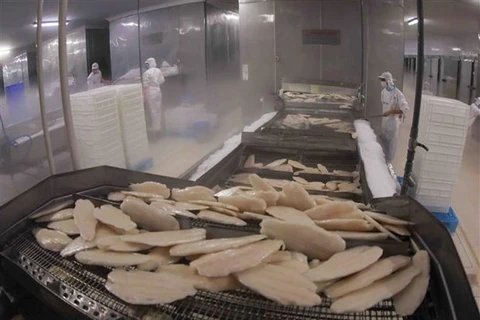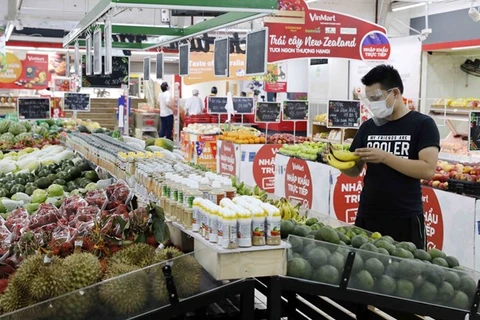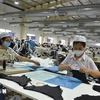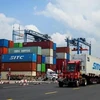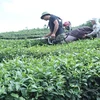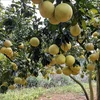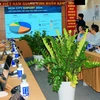Hanoi (VNA) – The United States was the largest importer of Vietnamese agricultural products in the first quarter of this year, with a turnover of 3.5 billion USD, according to the Ministry of Agriculture and Rural Development (MARD).
China came second with nearly 2.1 billion USD. It was followed by Japan and the Republic of Korea with nearly 872 billion USD and 562 million USD, respectively.
The export turnover of wood and wood products accounted for 68.2 percent of Vietnam's total agro-forestry-fishery export value in US market.
Vietnam’s agro-forestry-aquatic product export and import turnover was estimated at 22.6 billion USD in the first three months of this year, up 6.3 percent compared to the same period last year, the ministry said.
Of the figure, around 12.8 billion USD was worth of exports, an increase of 15.3 percent. About 9.8 billion USD was from imports, a decline of 3.5 percent against last year. This results in a trade surplus of roughly 3 billion USD, up 3.1 times year-on-year.
In March alone, the export value reached over 4.7 million USD, up 6 percent month-on-month and 47.1 percent year-on-year.
In the January-March period, exports of major farm produce hit nearly 5.5 billion USD, a rise of 12.8 percent. That of major forestry products reached about 4.3 billion USD, up 4.4 percent. Aquatic products reached nearly 2.4 billion USD, up 38.7 percent, while animal husbandry was roughly 75.6 billion USD, down 22.4 percent.
Products enjoying a rise in export revenue included coffee, rubber, rice, pepper, cassava and cassava products, shrimp, tra fish, wood and wooden furniture. Meanwhile, a downturn was seen in export value of tea and cashew nuts at 12 and 5 percent respectively.
In the period, Asia remained the largest market for Vietnam's agro-forestry-fisheries products with 40.3 percent of the market share, followed by America and Europe with 29.5 percent and 13.1 percent, respectively.
Brazil was the largest exporter in the first quarter with a turnover of 846 million USD, accounting for 8.6 percent; followed by Cambodia with about 738.4 million USD or 7.5 percent.
The import value of most main agricultural products, forest and livestock products decreased, except for aquatic products. In particular, the import value of fertilisers increased by 55.8 percent, and plant protection drugs up by 17.1 percent.
In order to expand export markets, the MARD will regularly provide information on prices, output, and production and supply of agricultural products as well as suggest solutions to remove the congestion of farm produce at the border gates.
It will also push up the opening of agricultural markets to other countries and devise a project to promote the export of agro-forestry-fisheries products to the European Union, the US, China and Japan.
Vietnam has set a goal of earning around 60-62 billion USD from agro-forestry-fisheries export by 2030 under a project approved by the Prime Minister last year.
The project looks to fully and sustainably join the global supply chain of agro-forestry-fisheries, improve the quality and value of their export to meet regulations of importers, and develop their trademarks in international markets.
Of the figure, 25 billion USD will be from major farm produce, 16-17 billion USD from forestry products, 15 billion USD from aquatic products, 3-4 billion USD from animal husbandry products, and nearly 2 billion USD from other areas.
Agro-forestry-fisheries export is expected to grow by some 6-8 percent annually. About 40 percent of export will be national brands, 70 percent have their origins traced, and around 60 percent of exports are processed and heavily processed items.
To such end, the project targets fine-tuning mechanisms and policies to ensure food safety and develop support industries, assisting firms in protecting intellectual property rights in export markets, popularising trademarks in domestic and foreign media./.

